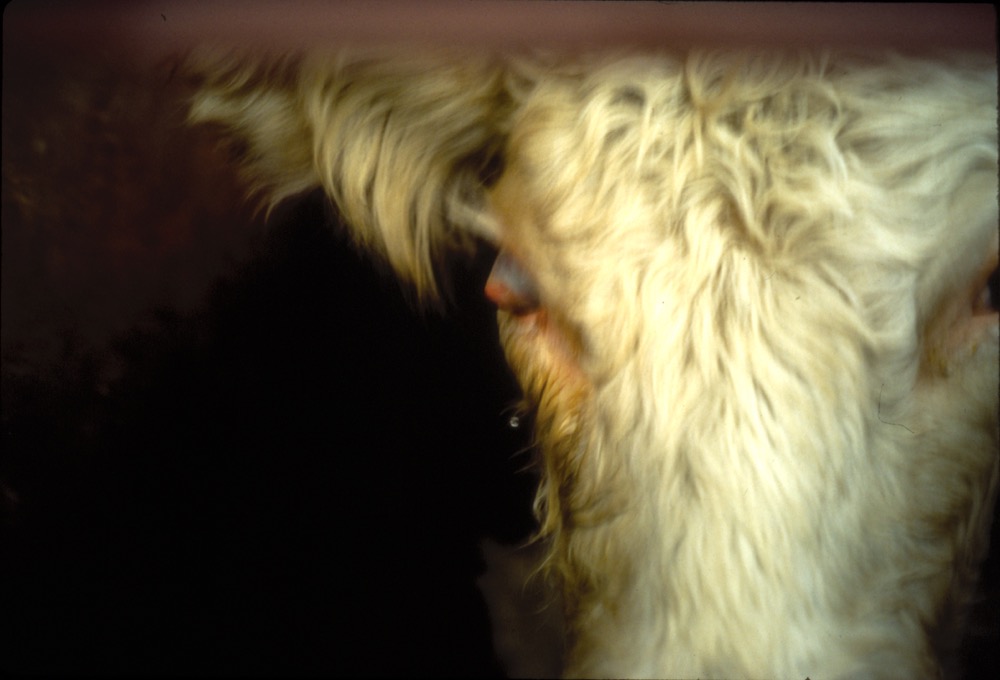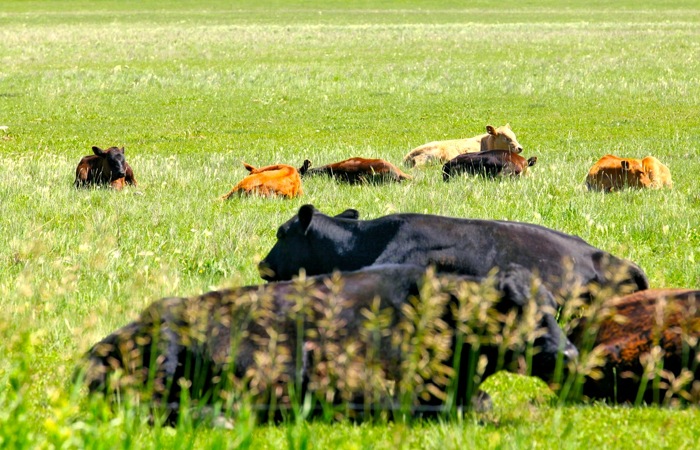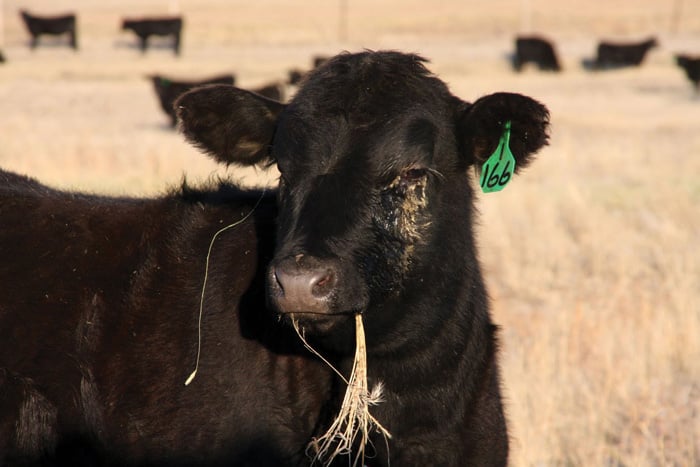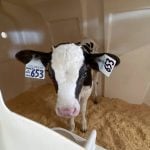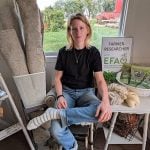I always feel sorry for beef cattle in an open field that cannot escape the hot summer sun. The other day I was driving a pasture with about 30 Black Angus cows and spring calves. Not a tree or waterer in sight. All the animals were crowded together, none were grazing and their calves were not nursing. I am pretty sure these cattle were suffering from heat stress.
As the temperature/humidity chart illustrates, beef cattle like the ones that I saw are susceptible and suffer from one of three Bs (baked, broiled or barbecued) of summertime heat stress. It starts to occur in cattle at any time when the temperature-humidity index (THI) of 72 is exceeded.
Read Also

What to know before you go to Agribition 2025
If you’re attending Agribition 2025, this is the place to find out about tickets, dates and what’s happening this year.
As cattle enter the ‘baked’ zone, because they don’t sweat like us (cattle have a 10 per cent capacity to do so), they must rely on panting to dissipate heat to maintain a normal body temperature of 101.5 F (38.6 C). As the weather gets hotter and/or more humid, these cattle figuratively move into the ‘broiled’ zone, where they significantly increase water consumption and lose much interest in eating.
Finally, under extreme heat-stress conditions, cattle are visibly uncomfortable and often foam from the mouth from excessive salvation. Beyond this point, cattle are literarily ‘barbecued’ to death.
Luckily, heat stress fatalities are rare in Western Canada, yet I would expect heat-stressed cows to slow down any significant grazing during the hottest parts of the day. If they don’t catch up at night, overall nutrient intake could be reduced and milk production could be irreversibly compromised. Also, slightly heat-stressed calves usually do not nurse as well and are less likely to use the creep feeders. Cow-calf loss of nutrition leads to significant lower spring calf weaning weights, which could mean lower revenues coming off pasture.
Losses add up
Just consider a 300-cow-calf operation with spring calves that traditionally gain 2.0 lbs. per day, only to stall out during a 21-day heat-stress period in August. When these calves are sold in the fall (assumed at the same time of the year); my calculation for their failure to gain weight/subsequent decreased income is as follows:
300 spring calves x 2 lb./head/ x 21 days x $2.25 (demonstration autumn price — weaned 600-lb. steers) = $28,350. That’s nearly a loss of $30,000 revenue directly due to heat stress.
Overall research supports that heat-stressed cows are more likely to remain open, because they are less likely to ovulate, have irregular estrus cycles, may have poor conception rates, and suffer from a high rate of early embryonic deaths at two different times of pregnancy. Cows that experience early embryonic loss during the first week of pregnancy appear as repeat breeders (return to cycling), while cows that experience fetal death later on come back to cycling at the end of the breeding season.
Late-breeding season bulls (re: breeding bull still out on pasture) might also become temporarily infertile due to heat stress.
Managing heat stress
Producers can’t change the weather, but there are many proactive steps that can help reduce hot weather’s negative impact upon the comfort and performance of the beef herd:
- Lots of cool, clean water must be provided. The water surface area should be sufficient for a large number of cattle to drink at the same time, and the water flow within the waterers and tanks should be replenished, quickly.
- Cows and calves should access to trees and other forms of shade. Open buildings and pole sheds with light-coloured roofs can be used to provide shade. Windbreaks will provide shade, but they reduce air movement and sometimes contribute to heat-stress.
- Adjust pasture management. Under rotational grazing systems; rotate the cattle through pastures more quickly. This change allows cattle to graze more digestible pasture forages which lowers their internal generation of heat from fiber fermentation.
- Feed a nutritious and palatable creep feed to nursing calves. It is also a good idea to frequently check the creep feeders, and not allow them to go empty.
- Provide salt and a good commercial mineral at all times. Pasture studies suggest cattle need more sodium, potassium, and magnesium under heat stress.
- Implement a good fly-control program. Many producers implement insecticide ear tags and use cattle back-rubbers, dusters and oilers. Eliminate shallow pools, muddy areas and other fly-breeding spots.
We can help grazing cattle and calves hit hard by the three Bs of heat stress by implementing these coping techniques. It’s my experience that they do work. A few years ago, I took a beef management course at Texas A&M University. One afternoon, I was walking down the street in College Station and the temperature was 40 C with a relative humidity of about 80 per cent (THI = 99). The rest of the day, I spent in the hotel pool, in the shade and drinking diet Pepsi. I felt much better.





